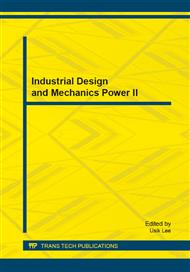[1]
P. W. Shor: Polynomial-time algorithms for prime factorization and discrete logarithms on a quantum computer, SIAM Journal on Computing, Vol. 26(5) (1997), pp.1484-1509.
DOI: 10.1137/s0097539795293172
Google Scholar
[2]
M. Ajtai: Generating hard instances of lattice problems (extended abstract), In ACM Symp. on Theory of Computing - STOC (1996), pp.99-108.
DOI: 10.1145/237814.237838
Google Scholar
[3]
O. Regev: On lattices, learning with errors, random linear codes, and cryptography, In Proc. 37th ACM Symp. on Theory of Computing – STOC (2005), pp.84-93.
DOI: 10.1145/1060590.1060603
Google Scholar
[4]
C. Peikert and B. Waters: Lossy trapdoor functions and their applications, In Proc. 40th ACM Symp. on Theory of Computing – STOC (2008), pp.187-196.
DOI: 10.1145/1374376.1374406
Google Scholar
[5]
C. Gentry, C. Peikert, and V. Vaikuntanathan: Trapdoors for hard lattices and new cryptographic constructions, In Proc. 40th ACM Symp. on Theory of Computing – STOC (2008), pp.197-206.
DOI: 10.1145/1374376.1374407
Google Scholar
[6]
D. Cash, D. Hofheinz, E. Kiltz and C. Peikert: Bonsai Trees, or How to Delegate a Lattice Basis, In Proceedings 29th Annual International Conference on the Theory and Applications of Cryptographic Techniques - Eurocrypt 2010, LNCS 6110, Springer-Verlag (2010).
DOI: 10.1007/978-3-642-13190-5_27
Google Scholar
[7]
Pierre-Louis Cayrel, Mohammed Meziani: Post-quantum cryptography: code-based signatures, Proceedings of the 2010 international conference on Advances in computer science and information technology, LNCS 6059, Springer-Verlag (2010), pp.82-99.
DOI: 10.1007/978-3-642-13577-4_8
Google Scholar
[8]
R.J. McEliece: A public-key cryptosystem based on algebraic coding theory, DSN progress report, No. 42-44 (1978), pp.114-116.
Google Scholar
[9]
M. Finiasz and N. Sendrier: Security bounds for the design of code-based cryptosystems, Advances in Cryptology – Asiacrypt 2009, LNCS 5912, Springer-Verlag (2009), pp.88-105.
DOI: 10.1007/978-3-642-10366-7_6
Google Scholar
[10]
G. Kabatianskii, E. Krouk, and B. J. M. Smeets: A digital signature scheme based on random error-correcting codes, IMA Int. Conf., LNCS 1355, Springer-Verlag (1997), p.161–167.
DOI: 10.1007/bfb0024461
Google Scholar
[11]
N. Courtois, M. Finiasz, and N. Sendrier: How to achieve a McEliece-based digital signature scheme, Advances in Cryptology – Asiacrypt 2001, LNCS 2248, Springer-Verlag (2001), pp.157-174.
DOI: 10.1007/3-540-45682-1_10
Google Scholar
[12]
S. J. Aboud: Two efficient digital multi-signature schemes, Int. J. Soft. Computing. Vol. 2 (2007), pp.113-117.
Google Scholar
[13]
M. Bellare and G. Neven: Multi-signatures in the plain public-key model and a general forking lemma, In Proc. 13th ACM conference on Computer and Communications Security ACM Press, New York (2006), pp.390-399.
DOI: 10.1145/1180405.1180453
Google Scholar
[14]
R. D. Díaz, L. H. Encinas and J. M. Masqué: A Multi-signature Scheme Based on the SDLP and on the IFP, In proceedings of the 4th international conference on computational intelligence in security for information systems - CISIS (2011).
DOI: 10.1007/978-3-642-21323-6_17
Google Scholar
[15]
Mohammed Meziani and Pierre-Louis Cayrel: A Multi-Signature Scheme based on Coding Theory, World Academy of Science, Engineering and Technology, Vol. 63 (2010), pp.244-250.
Google Scholar


